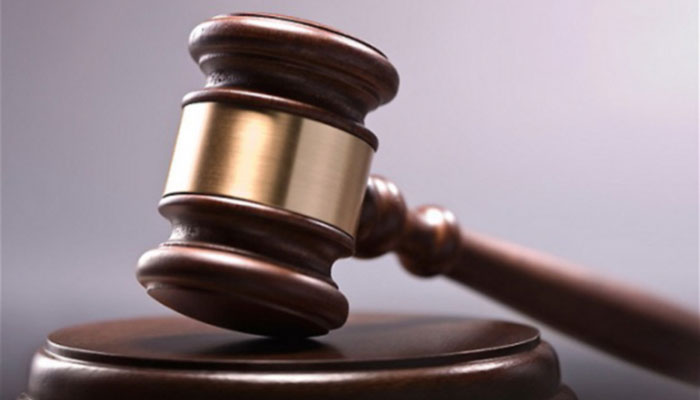Not guilty, but guilty?
We have thrown out a judge, forced a few to resign and are holding the door for yet another and there is no legal test defining judicial misconduct
September 05, 2019

We had long wished for life to be breathed into the judicial accountability process to ensure that dispensers of justice hold themselves to a high level of probity while sitting in judgment over fellow citizens.
The wish came true. But the kind of accountability that has been on display ranges from fraternity-style hazing to good old witch-hunts. No one knows what the precise rules are. There is just a general sense: he who crosses the wrong folk is out.
Judges are public office-holders. They do not just exercise delegated authority (and thus are devoid of any arbitrary discretion) but are also required to exhibit unfaltering commitment to fundamental fairness that raises them above the fray and makes them worthy of discharging God’s function on earth. The business of justice isn’t supposed to be driven by pique, prejudice, partisanship, personal glory and fear. Maybe that is expecting too much from fellow mortals. But that is what the job demands.
The stakes in how the Supreme Judicial Council conducts itself are obvious. At the core is judicial independence. A fair and transparent accountability process embellishes the integrity and independence of the justice system. But revenge as accountability sounds the death knell for independence. Then there is fairness. If judges can’t judge their own such that justice is seen to be done, what hope do ordinary litigants have? And, finally, are judges exempt from the principle they apply to others: that public functionaries must act transparently and reasonably?
As lawyers, we disagree with judicial decisions all the time. That is why we have an appeals process. We also like the court mannerism of some versus others: some judges are courteous and patient while hearing arguments, others are abrasive. But most critical is personal integrity: is the judge amenable to extraneous influences or will his conscience and honest understanding of the law (even if incorrect) guide him?
Even among those who disagree with Justice Isa’s rulings or mannerism, there are many who will vouch for his reputation of being a straight shooter. So when he gets dragged in the mud, one worries not for his sake but that of all others. Our history is no stranger to judges being incentivized or coerced to sign the dotted line. So if skeletons can be manufactured in his case, for many it is writing on the wall.
The counter-argument one hears is that if Justice Isa is as clean as is claimed he will come out shining, as it is his brother judges judging him. The foremost problem with this argument is again our history of cooption and coercion and of important judgments rarely being made independent of the state’s wishes. When CJP Iftikhar Chaudhry was locked up in his house, those judging him were his brother judges, and lawyers and others who protested at the time were aware of it.
When the senior-most judges now comprising the SJC were ousted and confined to their homes post-Nov 3, 2007, many of their brother judges gladly sat in their chambers and continued to work as if nothing had happened. The legal fraternity’s fears are rooted in this inglorious history that tends to repeats itself too often and resists becoming a thing of the past.
Under CJP Chaudhry emerged the invidious practice of media trials running alongside judicial trials, shaping public narrative and demonizing those on the system’s wrong side. The practice subsided during the terms of CJPs Jillani, Nasir-ul-Mulk and Jamali, but was revived under CJP Saqib Nisar. In face of media trials, the SC’s reliance on the doctrine of sub judice has been selective. Often it has just thrown its hands up when asked to intervene. But if need be it has dug its heels to ensure that there is no public commentary on a matter under trial.
Justice Isa is being probed for not disclosing in his wealth statement properties owned in the UK by his wife and adult children. He claims that they are not his dependents and so he couldn’t disclose their assets on his wealth statement. One would have assumed that a sitting judge of the SC being tried in the media and painted black while his reference is pending adjudication would persuade the SC to intervene. But it hasn’t.
What has been most intriguing in the whole affair is the second reference against Justice Isa alleging misconduct because he wrote letters to the president of Pakistan that found their way into the public domain (like the confidential reference against Justice Isa), created public controversy and embarrassed the prime minister. The SJC had found the allegations of misconduct grave enough to immediately issue the judge a second show-cause notice to explain himself. This reference should be a case study on what getting caught on the wrong side of the system looks like.
The premise of the letters was simple. The judge, like everyone, has the right to fair trial, dignity and privacy. These rights were subverted as the confidential reference was leaked to the media, which tried the judge forthwith and found him guilty. The judge asked the president for a copy of the reference to enable him to defend himself. And as the president acted on the PM’s advice, he asked if the PM had declared assets of his spouses and kids proving that the PM abided by the interpretation of law that he found the judge to have breached.
The SJC (adjudicating the reference with amazing alacrity) has now held that the judge didn’t misconduct himself because writing privately to the president is okay and there is no proof that he leaked letters to the media. But in disposing off the reference on this technicality, it lands brutal punches, calling the judge’s word unreliable (for asking the president for a copy of the reference even though he knew its content) and his conduct lacking discretion (for taking pot shots at the PM unnecessarily and revealing a private conversation with the CJP).
This order has made history: it is the first one filing a reference to be published. (Many, including Senior Advocate Abid Hasan Minto, have sought the orders that have disposed off hundreds of other judicial references, without success). Here the SJC didn’t concern itself with the Article 10-A rights of the judge or his media trial or his need for a copy of the reference and supporting materials to defend himself. Instead, it chose to question the veracity of the judge’s account and the premise for asking for the reference that the CJP had privately shown him.
The order says the CJP refused to share a copy of the reference with the accused judge because it was for the SJC to do so. But it doesn’t say in what capacity the CJP let the accused judge read the confidential reference or discuss it with the judge privately before sitting in judgment over it officially as head of SJC.
In the face of growing demands for transparency in conducting itself, the SJC proclaims the privilege of possessing unguided discretion: it says it has a right to determine its own procedure and a right not to follow such procedure if it so deems fit.
The materials that project Justice Isa in a bad light make it into the public domain immediately either in the name of transparency or happenstance. But those that prevent mud from sticking to him are projected as malign efforts to influence the case against him.
We have thrown out a judge, forced a few to resign, and are holding the door for yet another and there is no legal test defining judicial misconduct. Is it any infraction in a judge’s life since he acquired puberty or is it wrongdoing in performance of his judicial functions? On the same facts and reasoning that the SJC found Justice Isa not guilty in Reference No 2, it could have very well have concluded that he is guilty. That is the kind of certainty our rule of law boasts.
The writer is a lawyer based in Islamabad.
Email: [email protected]
Originally published in The News









